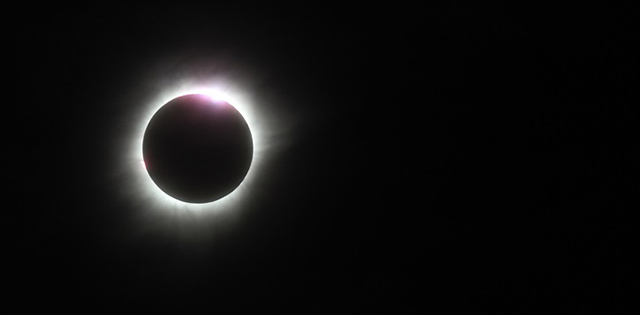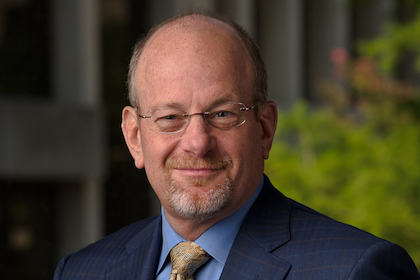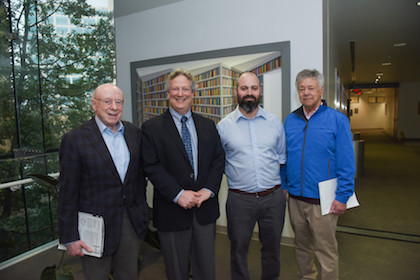Ingenuity rules at solar eclipse watch party

As the clock ticked down to prime viewing time, excitement in the air began to build. Then a little after 1 p.m. Monday, hundreds of UT Southwestern employees, faculty, and employees witnessed a rare celestial event – a solar eclipse in which the moon moves in front of the sun.
The prospect of seeing this heavenly event made the C. Kern Wildenthal Research Building on the North Campus the place to be that day. In less than five minutes, more than 200 pairs of protective eyewear provided for campus viewers of the eclipse watch party were gone as an estimated 800 gathered. But for UT Southwestern’s scientifically inclined crowd, ingenuity leveled the playing field. Groups of people needed no glasses, showing up with their own viewing devices.
Every size and kind of box had been converted, and even kitchenware items such as colanders were used to see what the sun was doing – not to mention the shadows created by leaves on the North Campus trees.
Dr. Ravnik kept the crowd updated on times of major parts of the seldom-seen event while enjoying the spectacle himself.
Just about everyone from the lab of Dr. Mark Goldberg, Chairman of Neurology and Neurotherapeutics, came to the watch party. They came toting a variety of viewing devices.
“We decided about a half hour ago that we were going to be here,” said Dr. Goldberg, himself hauling a viewer made out of a cardboard box, aluminum foil, and duct tape. “The viewers took about five minutes to make.”
It wasn’t even Dr. Goldberg’s first eclipse. He remembered the day in 1970 when he viewed an eclipse that NASA called “The Eclipse of the Century” took place in Savannah, Georgia.
First-year medical student Swetha Ramamurthy joined in the excitement with a number of classmates. “We decided last week we were going to grab this opportunity, and it looks like a lot of people in our class came, too, and that makes it cool because people had to make the effort to come out.”
Stephanie Harper, a recently hired employee in Surgical Services, got more than the usual campus tour that day. Rylee Pedlar, a training supervisor in Guest Services, had been showing Ms. Harper around campus when the two stumbled upon the viewing party.
“We didn’t know what was going on,” Ms. Pedlar said, “but it turns out that it’s a once-in-a-lifetime experience, so we just had to watch it.”
Electron Microscopy Core Facility employees Phoebe Doss, Rebecca Jackson, and Robyn Leidel were kidded about their high-tech device – a printer paper box with a pinhole in one end and a piece of white paper pasted to the inside at the other end. They shared their quickly constructed “invention” with those around them.
One particularly interested observer was second-year medical student Gautam Babu, who earned his undergraduate degree in astronomy.
“Seeing the alignment – the moon moving between the earth and the sun – doesn’t happen every day,” said Mr. Babu, who also earned a biology degree from Dartmouth College, where he studied how the body adapts to space travel. “Seeing everyone getting really excited about this is cool, too. I hope that this will get more kids interested in space.”
The event couldn’t have been a real celebration without some sort of star-themed party favors. So what do you serve for snacks at a solar eclipse watch party?
Suzette Smith, Director of the Office of Student Life, and of the Bryan Williams, M.D. Student Center, treated attendees to a galaxy of treats: turkey and cheese sandwiches (dubbed moon rocks), SunChips, Moon Pies, Starburst fruit chews, cookies, Starlight peppermints, Lifesavers, water, and juices – Capri Sun, of course.
–Lin Lofley
Visit the UT Southwestern Facebook page for images from the event.



